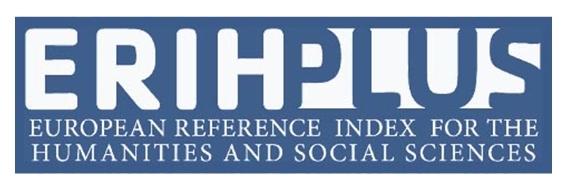Contenido principal del artículo
jun 21, 2019
Resumen
Este trabajo describe una clase de conversación avanzada que aborda la instrucción de temas culturales del mundo hispanoparlante. Las materias son apropiadas para la enseñanza de inglés/español avanzado en la escuela secundaria o la universidad. El objetivo es enseñar a los estudiantes a aprender activamente a identificar y deconstruir el pensamiento binario y las narrativas reduccionistas. Esto se hace a través de la investigación analítica reflexiva, en una variedad de consideraciones centrales referente a discusiones sobre la historia, la sociedad y la cultura estadounidense y la mexicana a través del arte de performance de Violeta Luna.
Descargas
Política propuesta para revistas que ofrecen acceso abierto
Aquellos autores/as que tengan publicaciones con esta revista, aceptan los términos siguientes:
- Los autores/as conservarán sus derechos de autor y garantizarán a la revista el derecho de primera publicación de su obra, el cuál estará simultáneamente sujeto a la Licencia de reconocimiento de Creative Commons que permite el uso de este material siempre que se indique su autoría y la fuente original de su publicación (URL de la revista), no se use con fines comerciales y sin derivaciones de la obra original.
- Los autores/as podrán adoptar otros acuerdos de licencia no exclusiva de distribución de la versión de la obra publicada (p. ej.: depositarla en un archivo telemático institucional o publicarla en un volumen monográfico) siempre que se indique la publicación inicial en esta revista.
- Se permite y recomienda a los autores/as difundir su obra a través de Internet (p. ej.: en archivos telemáticos institucionales o en su página web) antes y durante el proceso de envío, lo cual puede producir intercambios interesantes y aumentar las citas de la obra publicada. (Véase El efecto del acceso abierto).
Citas
Allatson, Paul. 2002. Latino Dreams: Transcultural Traffic and the U.S. National Imaginary. Amsterdam: Rodopi.
Anzaldúa, Gloria. 2007. Borderlands/La Frontera: The New Mestiza. Third Edition. SanFrancisco: Aunt Luce Books.
Balibar, Étienne and Immanuel Wallerstein. 1991. "The Nation Form."Race, Nation, Class: Ambiguous Identities. London: Verso.
Galloway, Vicki. 2001. “Giving Dimension to Mappaemundi: The Matter of Perspective”.Teaching Cultures of the Hispanic World: Products and Practices of Perspective.Ohio: Wadsworth, Cengage Learning: 3-64.
Haraway, Donna. 1990. “A Manifesto for Cyborgs: Science, Technology, and Socialist Feminism in the 1980s.” Feminism/Postmodernism. New York: Routledge:190-233.
Hodoyán, Karina. 2010. “Violeta Luna: Requiem”. Hemispheric Institute e-misférica. http://hemisphericinstitute.org/hemi/en/e82-luna-review. [Consulted 04/06/2019].
Luna, Violeta. 2015. NK603: Action for performance & e-Maiz. Unpublished presentationat California State University Los Angeles.
Mignolo, Walter. 2000. The Darker Side of Western Modernity. London: DukeUniversity Press.
Neustadt, Robert. 1999. (Con)Fusing Signs and Postmodern Positions. New York: Routledge.
Soto, Sandra K. 2010. Reading Chican@ Like a Queer: The De-Mastery of Desire. Austin: University of Texas Press.
Taylor, Diana. 2003. The Archive and the Repertoire: Performing Cultural Memory in theAmericas. Durham: Duke University Press.
Trompenaars, Fons; Hamden-Turner, Charles. 1998. Riding the Waves ofCulture:Understanding Diversity in Global Business, 2nded. New York: McGraw Hill.
Verea, Roberto Gutiérrez. “Body and Space as Sites of Transfer: Violeta Luna’sRequiem for a Lost Land”. Hemispheric Institute e-misférica.http://hemisphericinstitute.org/hemi/en/e82-luna-presentation. [Consulted 04/06/2019].






